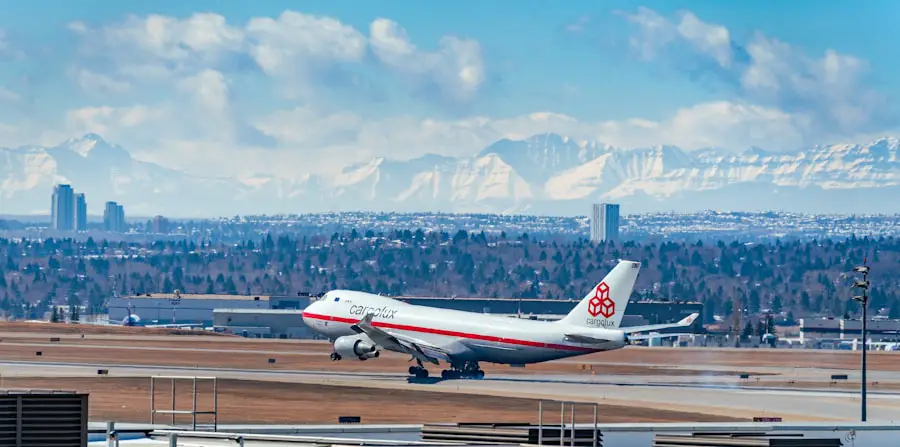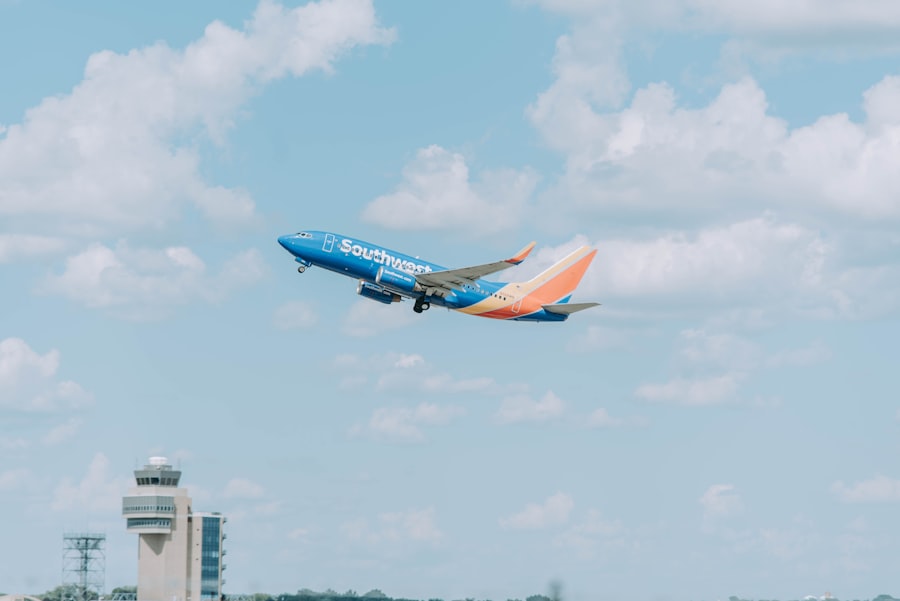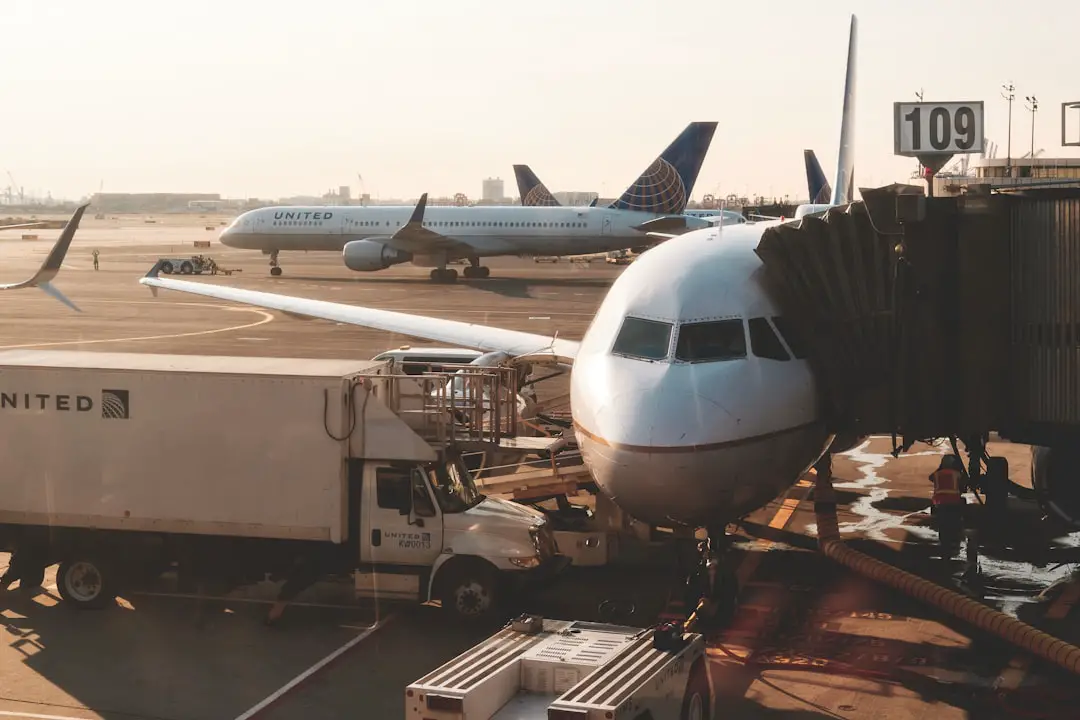Boeing, a name synonymous with aviation excellence, has been a cornerstone of the aerospace industry since its inception in 1916. Founded by William Boeing in Seattle, Washington, the company has evolved from a small manufacturer of seaplanes to one of the largest aerospace companies in the world. With a rich history marked by innovation and engineering prowess, Boeing has played a pivotal role in shaping commercial aviation.
The company’s aircraft are not just machines; they represent a blend of cutting-edge technology, safety, and efficiency that has transformed air travel. Over the decades, Boeing has introduced a range of aircraft that cater to various segments of the aviation market. From short-haul regional jets to long-haul wide-body aircraft, Boeing’s portfolio is diverse and comprehensive.
The company’s commitment to research and development has led to significant advancements in aerodynamics, materials science, and avionics, ensuring that its aircraft remain at the forefront of the industry. As airlines around the globe continue to expand their fleets and enhance their services, Boeing’s aircraft remain a preferred choice for many operators, reflecting the brand’s reputation for reliability and performance.
Key Takeaways
- Boeing is a leading aircraft manufacturer with a wide range of aircraft catering to different airline needs.
- Major airlines such as American Airlines, Delta Air Lines, and United Airlines use Boeing aircraft for their operations.
- The Boeing 737 is a popular choice for low-cost carriers due to its efficiency and cost-effectiveness.
- The Boeing 747 is an iconic aircraft known for its long-haul flight capabilities and spacious interiors.
- The Boeing 777 is the preferred choice for international routes, offering a balance of range, capacity, and fuel efficiency.
Major Airlines Using Boeing Aircraft
Numerous airlines around the world have integrated Boeing aircraft into their fleets, leveraging the manufacturer’s reputation for quality and performance. Major carriers such as American Airlines, Delta Air Lines, and United Airlines have long relied on Boeing for their operational needs. For instance, American Airlines operates a substantial fleet of Boeing 737s and 777s, utilizing these aircraft for both domestic and international routes.
The versatility of these models allows airlines to optimize their operations based on passenger demand and route characteristics. Internationally, airlines like Emirates and Qatar Airways have made significant investments in Boeing aircraft, particularly the 777 and 787 Dreamliner. Emirates operates one of the largest fleets of Boeing 777s in the world, using them for long-haul flights that connect passengers from Dubai to destinations across six continents.
Similarly, Qatar Airways has embraced the 787 Dreamliner for its fuel efficiency and passenger comfort, enhancing its reputation as a premium airline. The widespread adoption of Boeing aircraft by these major airlines underscores the manufacturer’s ability to meet diverse operational requirements while maintaining high standards of safety and performance.
Boeing 737: Popular Choice for Low-Cost Carriers

The Boeing 737 has become a staple in the fleets of low-cost carriers (LCCs) around the globe. Its design, which emphasizes efficiency and cost-effectiveness, makes it an ideal choice for airlines looking to maximize profitability while offering competitive fares. The 737 family includes various models, from the original series to the latest MAX variants, each designed to cater to different market needs.
The aircraft’s single-aisle configuration allows for quick turnarounds at airports, which is crucial for LCCs that operate on tight schedules. Ryanair and Southwest Airlines are prime examples of low-cost carriers that have successfully integrated the Boeing 737 into their operations. Ryanair operates one of the largest fleets of 737-800s in Europe, capitalizing on the aircraft’s range and capacity to serve numerous short-haul routes across the continent.
Southwest Airlines, known for its no-frills service model, has built its entire business around the 737, utilizing it for point-to-point travel across the United States. The aircraft’s reliability and operational efficiency have enabled these airlines to maintain low operating costs while providing extensive route networks.
Boeing 747: Iconic Aircraft for Long-Haul Flights
| Aspect | Details |
|---|---|
| First Flight | February 9, 1969 |
| Manufacturer | Boeing Commercial Airplanes |
| Passenger Capacity | 366-524 passengers |
| Range | 7,260 nautical miles (13,420 km) |
| Length | 231 ft 10 in (70.6 m) |
| Wingspan | 211 ft 5 in (64.3 m) |
| Height | 63 ft 8 in (19.4 m) |
The Boeing 747, often referred to as the “Jumbo Jet,” has left an indelible mark on aviation history since its introduction in 1970. Known for its distinctive humpbacked fuselage and spacious interior, the 747 revolutionized long-haul travel by enabling airlines to transport large numbers of passengers over vast distances. Its capacity to carry more than 400 passengers in a typical two-class configuration made it a game-changer for international travel, allowing airlines to offer more affordable fares while maximizing revenue potential.
Airlines such as British Airways and Qantas have utilized the Boeing 747 extensively on their long-haul routes. British Airways operated a significant fleet of 747-400s for decades, connecting London with destinations across Asia, North America, and Australia. Qantas also relied heavily on the 747 for its transpacific routes, providing travelers with a comfortable flying experience on long journeys.
Despite newer aircraft entering the market, the 747 remains an iconic symbol of air travel, representing both luxury and efficiency in long-distance transportation.
Boeing 777: Preferred Choice for International Routes
The Boeing 777 has established itself as a preferred choice for airlines operating international routes due to its impressive range and passenger capacity. First introduced in 1995, the 777 was designed with input from airlines and pilots, resulting in an aircraft that meets the demands of modern air travel. Its twin-engine design offers significant fuel efficiency compared to older wide-body aircraft while maintaining high levels of performance and reliability.
Airlines like Cathay Pacific and Singapore Airlines have embraced the Boeing 777 for their long-haul operations. Cathay Pacific utilizes the 777-300ER on routes connecting Hong Kong with major cities worldwide, benefiting from its range and passenger comfort. Singapore Airlines has also integrated various models of the 777 into its fleet, using them on routes that require both capacity and efficiency.
The aircraft’s spacious cabin layout and advanced technology make it an attractive option for passengers seeking comfort on long flights.
Boeing 787: Fuel-Efficient Dreamliner for Long-Distance Travel

Advanced Materials and Design
Introduced in 2011, the Dreamliner features composite materials that reduce weight while enhancing structural integrity. This innovative design allows airlines to operate longer routes with lower fuel consumption compared to traditional aircraft.
Enhanced Passenger Experience
The Dreamliner’s cabin is also designed with passenger comfort in mind, featuring larger windows, improved air quality, and quieter engines.
Early Adopters and Success
Airlines such as All Nippon Airways (ANA) and Ethiopian Airlines have been early adopters of the Dreamliner, recognizing its potential to enhance operational efficiency while providing an exceptional travel experience. ANA was the launch customer for the 787 and has utilized it extensively on international routes connecting Japan with North America and Europe. Ethiopian Airlines has also integrated the Dreamliner into its fleet as part of its strategy to expand its global reach while maintaining cost-effective operations. The success of the 787 underscores Boeing’s commitment to innovation in response to evolving market demands.
Regional Airlines and Boeing Aircraft
Regional airlines play a crucial role in connecting smaller communities with larger hubs, often serving as feeders for major carriers. Many regional operators have chosen Boeing aircraft to fulfill their operational needs due to their reliability and performance characteristics. The Boeing 737 is frequently used by regional airlines for short-haul flights, while smaller models like the Embraer E-Jets or Bombardier CRJ series are also popular choices among regional operators.
For instance, Horizon Air operates a fleet of Bombardier Q400 turboprops but has also utilized Boeing 737s for certain routes within its network. This flexibility allows regional airlines to adapt their services based on demand while benefiting from the operational efficiencies associated with Boeing aircraft. Additionally, partnerships between regional carriers and major airlines often involve codeshare agreements that enable seamless travel experiences for passengers connecting through larger hubs.
Cargo Airlines and Boeing Freighters
Boeing’s commitment to cargo aviation is evident through its production of dedicated freighter versions of its commercial aircraft. The Boeing 747 Freighter series has been a workhorse for cargo airlines worldwide, providing substantial capacity for transporting goods across long distances. The versatility of these freighters allows them to accommodate various types of cargo, from perishables to oversized freight.
Companies like FedEx Express and UPS Airlines have heavily invested in Boeing freighters to support their global logistics operations. FedEx operates a significant fleet of Boeing 767 Freighters alongside its iconic 747 Freighters, enabling efficient delivery services across its extensive network. UPS Airlines also relies on Boeing freighters to meet growing demand for air cargo services, utilizing models like the 767-300F for both domestic and international shipments.
The adaptability of Boeing’s freighter designs ensures that cargo operators can efficiently respond to changing market dynamics while maintaining high service standards.
Future of Boeing Aircraft in the Airline Industry
As the airline industry continues to evolve in response to changing passenger preferences and environmental concerns, Boeing is poised to play a significant role in shaping its future. The company is actively investing in research and development initiatives aimed at enhancing aircraft performance while reducing environmental impact. Innovations such as sustainable aviation fuels (SAFs) and electric propulsion systems are being explored as potential solutions to address climate change challenges facing aviation.
Moreover, Boeing is focusing on developing next-generation aircraft that incorporate advanced technologies such as artificial intelligence (AI) and automation to improve operational efficiency. These advancements could lead to more streamlined flight operations and enhanced safety measures within commercial aviation. As airlines seek to modernize their fleets and improve sustainability practices, Boeing’s commitment to innovation positions it as a key player in driving positive change within the industry.
Environmental Impact of Boeing Aircraft
The environmental impact of aviation is a pressing concern as global air travel continues to grow. Boeing recognizes this challenge and is actively working towards reducing emissions associated with its aircraft. The introduction of more fuel-efficient models like the 787 Dreamliner exemplifies this commitment; these aircraft consume significantly less fuel per passenger mile compared to older models.
Additionally, Boeing is collaborating with industry stakeholders to promote sustainable aviation fuels (SAFs), which can reduce lifecycle greenhouse gas emissions by up to 80%.
By investing in research initiatives focused on alternative propulsion systems and eco-friendly technologies, Boeing aims to lead efforts toward achieving net-zero carbon emissions by 2050 within the aviation sector. This proactive approach reflects an understanding that sustainability is not just an option but a necessity for future growth in air travel.The Versatility and Impact of Boeing Aircraft in the Aviation Industry
Boeing’s extensive range of aircraft has had a profound impact on the aviation industry over more than a century of operation. From regional jets serving local markets to iconic wide-body aircraft facilitating international travel, Boeing has consistently delivered innovative solutions that meet diverse airline needs. The company’s commitment to safety, efficiency, and sustainability positions it as a leader in shaping the future of air travel.
As airlines navigate challenges such as fluctuating demand patterns and environmental regulations, Boeing’s adaptability will be crucial in supporting their growth strategies. With ongoing advancements in technology and a focus on sustainability initiatives, Boeing is well-equipped to continue playing a vital role in transforming how people connect across distances while minimizing environmental impact.
If you’re planning on traveling in 2025, you may want to consider investing in some waterproof sneakers to keep your feet dry and comfortable. Check out this article on 5 Must-Have Waterproof Sneakers for Your Spring 2025 Travels. And don’t forget to pack your best carry-on luggage for international travel to make your journey smoother. For those who enjoy fishing while traveling, be sure to bring along the best travel fishing rod for your adventures.
FAQs
What airlines use Boeing aircraft?
Boeing aircraft are used by a wide range of airlines around the world. Some of the major airlines that use Boeing aircraft include American Airlines, Delta Air Lines, United Airlines, Southwest Airlines, and Lufthansa.
What types of Boeing aircraft are commonly used by airlines?
Airlines commonly use a variety of Boeing aircraft, including the Boeing 737, Boeing 747, Boeing 767, Boeing 777, and Boeing 787. These aircraft are used for both domestic and international flights.
Why do airlines choose to use Boeing aircraft?
Airlines choose to use Boeing aircraft for a variety of reasons, including their reliability, fuel efficiency, and range capabilities. Boeing aircraft are also known for their advanced technology and passenger comfort features.
Are there any low-cost airlines that use Boeing aircraft?
Yes, there are several low-cost airlines that use Boeing aircraft, including Southwest Airlines and Ryanair. These airlines utilize Boeing aircraft to offer affordable and efficient air travel options to their customers.
Do all airlines exclusively use Boeing aircraft?
No, not all airlines exclusively use Boeing aircraft. Many airlines operate a mixed fleet of aircraft from different manufacturers, including Airbus, Bombardier, and Embraer. This allows airlines to tailor their fleet to their specific route networks and passenger demands.
